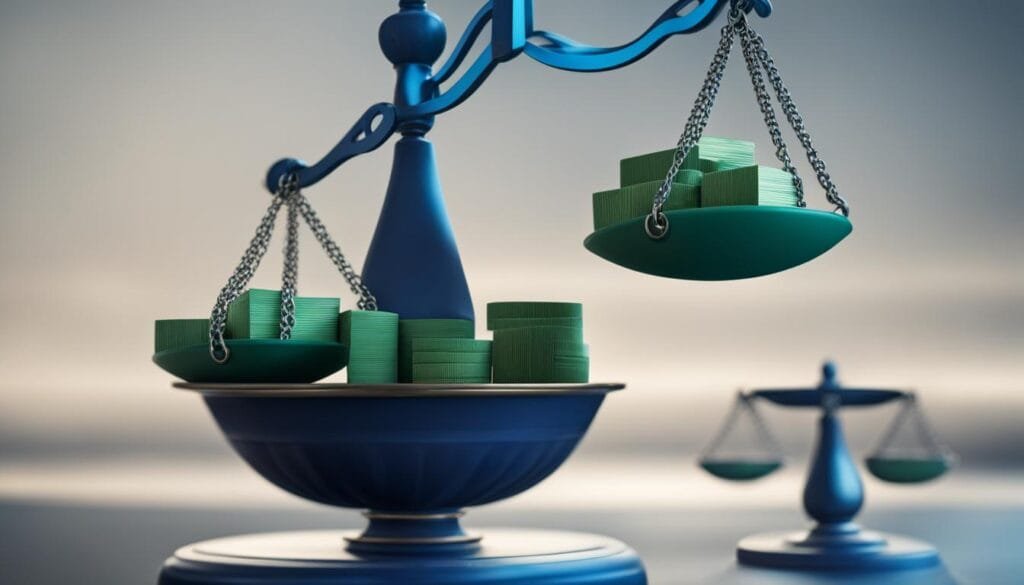When it comes to protecting assets in unpredictable markets, many investors turn to precious metals like gold and silver. These timeless commodities have long been considered a safe haven for wealth preservation and growth. As the stock market becomes increasingly volatile, investing in precious metals can provide a sense of security and stability.
Gold and silver, in particular, have a proven track record of retaining their value over time. During economic downturns and times of uncertainty, the demand for these precious metals tends to increase, driving up their prices. This makes them attractive investment choices for those seeking asset protection.
One of the ways investors can include precious metals in their investment portfolio is through a precious metal IRA. This specialized retirement account allows individuals to hold gold, silver, and other valuable metals as part of their retirement savings. By diversifying their portfolio with precious metals, investors can potentially reduce the impact of market fluctuations and safeguard their wealth.
Key Takeaways:
- Precious metals like gold and silver are considered safe havens in unpredictable markets.
- Investing in precious metals can provide asset protection and potential growth.
- A precious metal IRA allows investors to include gold, silver, and other valuable metals in their retirement savings.
- Diversifying a portfolio with precious metals can help reduce the impact of market fluctuations.
- By investing in precious metals, individuals can preserve and grow their wealth over the long term.
What Is a Precious Metal IRA?
A precious metal IRA is a self-directed individual retirement account that allows investors to diversify their retirement portfolio by including precious metals such as gold, silver, and even cryptocurrency. Unlike conventional IRAs, self-directed precious metal IRAs have the same contribution limits. These accounts are chosen by some individuals as part of their retirement plan because precious metals have shown long-term value growth.
Including precious metals in a retirement account may help protect wealth, reduce investment volatility, and provide a tax-efficient shelter for potential gains. Precious metal IRAs offer investors the opportunity to include tangible assets in their retirement savings, offering a level of stability and diversification that may not be present in traditional investment options. These accounts are particularly attractive to individuals who seek alternative investments and are looking to hedge against potential economic downturns.
With a precious metal IRA, investors have the flexibility to choose between a variety of precious metals, including gold, silver, platinum, or palladium. These metals must meet specific purity standards set by the IRS. By including a mix of different precious metals in their portfolio, investors can further diversify their retirement funds and potentially mitigate risk.
Benefits of a Precious Metal IRA
- Diversification: Including precious metals in a retirement portfolio provides diversification, reducing the overall risk of the investment portfolio.
- Inflation Hedge: Precious metals, especially gold and silver, have historically served as a hedge against inflation, preserving purchasing power over the long term.
- Asset Protection: Precious metals are tangible assets that have inherent value, and they can provide a level of protection against economic uncertainties and market volatility.
- Tax Advantages: Depending on the specific precious metals and the retirement account structure, investors may benefit from potential tax advantages, such as tax-deferred growth or tax-free withdrawals in certain circumstances.
“A precious metal IRA offers investors the opportunity to include tangible assets in their retirement savings, providing stability and diversification in unpredictable markets.”
How Does a Precious Metal IRA Work?
A precious metal IRA operates differently from a traditional retirement account. In addition to a company managing the IRA, investors must select a custodian who will securely store the physical precious metals. The custodian plays a crucial role in ensuring compliance with IRS regulations, which govern the ownership and storage of precious metals in IRAs.
Investors have the option to invest in various precious metals, including gold, silver, platinum, and palladium. However, these metals must meet specific purity standards set by the IRS. It’s important to choose a reputable custodian who can guide you through the process and ensure your precious metal IRA remains compliant.
One of the key advantages of a precious metal IRA is the ability to hold physical assets that are considered a safe haven during economic uncertainty. By including precious metals in your retirement account, you can potentially reduce investment volatility and protect your wealth. Additionally, precious metal IRAs may offer tax advantages, further enhancing their appeal as a retirement investment option.
To summarize, a precious metal IRA requires the selection of a custodian who will securely store the physical precious metals, adherence to IRS regulations regarding the types and purity standards of metals, and the potential benefits of reduced volatility and tax advantages. By understanding how a precious metal IRA works, investors can utilize this investment vehicle to diversify their retirement portfolio and potentially safeguard their wealth.
How Much of Your IRA Should Include Precious Metals?
When considering investing in precious metals for your IRA, it’s crucial to determine the right allocation that aligns with your financial goals and risk tolerance. Experts recommend a conservative approach, suggesting that investors include no more than 5% to 10% of their retirement funds in precious metals. Diversification is key to a well-designed portfolio, and while gold and other precious metals have historically held their value over the long term, it’s essential to consider their performance relative to other asset classes.
While precious metals can serve as “safe haven” assets during times of crisis, they can also be volatile and may not provide the same level of security and inflation hedging as other investment options. It’s important to balance the potential benefits of including precious metals in your IRA with the risks associated with their price fluctuations.
By limiting your allocation to a modest percentage, you can ensure that your retirement funds are diversified across a range of asset classes, including stocks, bonds, and other investments. This approach helps mitigate risk and provides the opportunity for potential growth and stability over the long term.
| Asset Class | Allocation Percentage |
|---|---|
| Stocks | 60% |
| Bonds | 20% |
| Precious Metals (Gold, Silver, etc.) | 5% to 10% |
| Real Estate | 10% |
| Other Alternative Investments | 5% |
Ultimately, the ideal allocation for your IRA will depend on your individual financial situation and investment objectives. It’s always advisable to consult with a financial advisor or retirement planner who can provide personalized guidance based on your specific needs and preferences.
Special Considerations for Precious Metal IRAs
Investing in a precious metal IRA comes with certain special considerations that investors should be aware of. These considerations include additional fees, physical asset storage, taxes, and penalties. It’s important to understand these factors before making the decision to invest in a precious metal IRA.
Fees
When investing in a precious metal IRA, investors should be prepared for additional fees compared to traditional IRAs. These fees can include setup fees, transaction fees, custodial fees, and physical asset storage fees. It’s important to research and compare different custodians to ensure that you are getting the best value for your money.
Physical Asset Storage
One of the unique aspects of a precious metal IRA is the need for secure storage of the physical assets. The IRS rules prohibit keeping the precious metals at home, which means investors must rely on a storage facility provided by their custodian. Storing the metals at home may result in additional taxes and penalties, so it’s essential to follow the IRS regulations and store the assets in an approved facility.
Taxes and Penalties
Investing in a precious metal IRA may have tax implications. It’s important to consult with a tax advisor to understand the tax implications of investing in precious metals and how they can impact your overall financial situation. Additionally, withdrawals from a precious metal IRA can be made either as in-kind distributions or by having the depository purchase the metal from the investor. Understanding the tax consequences of these options is crucial.
Overall, investing in a precious metal IRA can be a lucrative opportunity for diversifying your retirement savings. However, it’s crucial to consider the special considerations involved, such as fees, physical asset storage, taxes, and penalties. By understanding these factors and seeking professional advice, investors can make informed decisions and maximize the potential benefits of a precious metal IRA.
Conclusion
Investing in precious metals, such as gold and silver, offers investors a range of benefits and opportunities for diversification in their investment choices. These traditional safe haven assets have long been recognized for their stability and ability to retain value over time. Including precious metals in a retirement portfolio can provide stability and help safeguard against market volatility, making them a valuable addition to retirement planning strategies.
Precious metal IRAs offer investors the ability to include gold, silver, platinum, or palladium in their retirement savings. This provides not only the potential for long-term value growth but also the opportunity to reduce risk and hedge against economic uncertainties. By adding precious metals to their retirement accounts, individuals can diversify their investment portfolio and potentially benefit from tax advantages.
It is important to note that precious metal IRAs come with specific regulations and restrictions, which should be carefully considered. Choosing a reputable custodian is crucial to ensure compliance with IRS regulations and secure storage of the physical assets. Additionally, investors should be mindful of the fees associated with precious metal IRAs compared to traditional retirement accounts.
In conclusion, investing in precious metals can be a reliable choice for individuals seeking stability, value, and diversification in their investment portfolios. As part of a well-rounded retirement plan, precious metal IRAs provide an avenue for long-term wealth preservation. By carefully navigating the regulations and selecting reputable custodians, investors can take advantage of the potential benefits offered by precious metals in their pursuit of a secure financial future.
FAQ
What is a precious metal IRA?
A precious metal IRA is a self-directed individual retirement account that allows investors to include precious metals like gold, silver, and palladium in their portfolio.
How does a precious metal IRA work?
Investors need to choose a custodian to securely store the physical precious metals in a storage facility. The custodian ensures that the account meets IRS regulations regarding the types of metals that can be owned and how they are stored.
How much of my IRA should include precious metals?
Experts recommend investing no more than 5% to 10% of your retirement funds in precious metals to maintain diversification and reduce unnecessary risk.
What special considerations come with precious metal IRAs?
Precious metal IRAs come with additional fees compared to traditional IRAs, including setup fees, transaction fees, custodial fees, and physical asset storage fees. Precious metals cannot be stored at home due to IRS rules.
Why should I consider investing in precious metals?
Precious metals like gold and silver can act as safe haven assets during times of economic uncertainty, provide potential tax advantages, and offer diversification in unpredictable markets.
Are Precious Metals Considered Natural Resources in Investing?
When it comes to understanding commodity markets, it is crucial to consider whether precious metals qualify as natural resources in investing. Precious metals like gold, silver, and platinum are indeed considered natural resources as they are extracted from the earth. These metals hold significant value and serve as alternative investments for those seeking diversification and a hedge against inflation.


Pingback: Government Bonds: Investing in Treasury Securities as a Safe Haven – Straight Fire Money